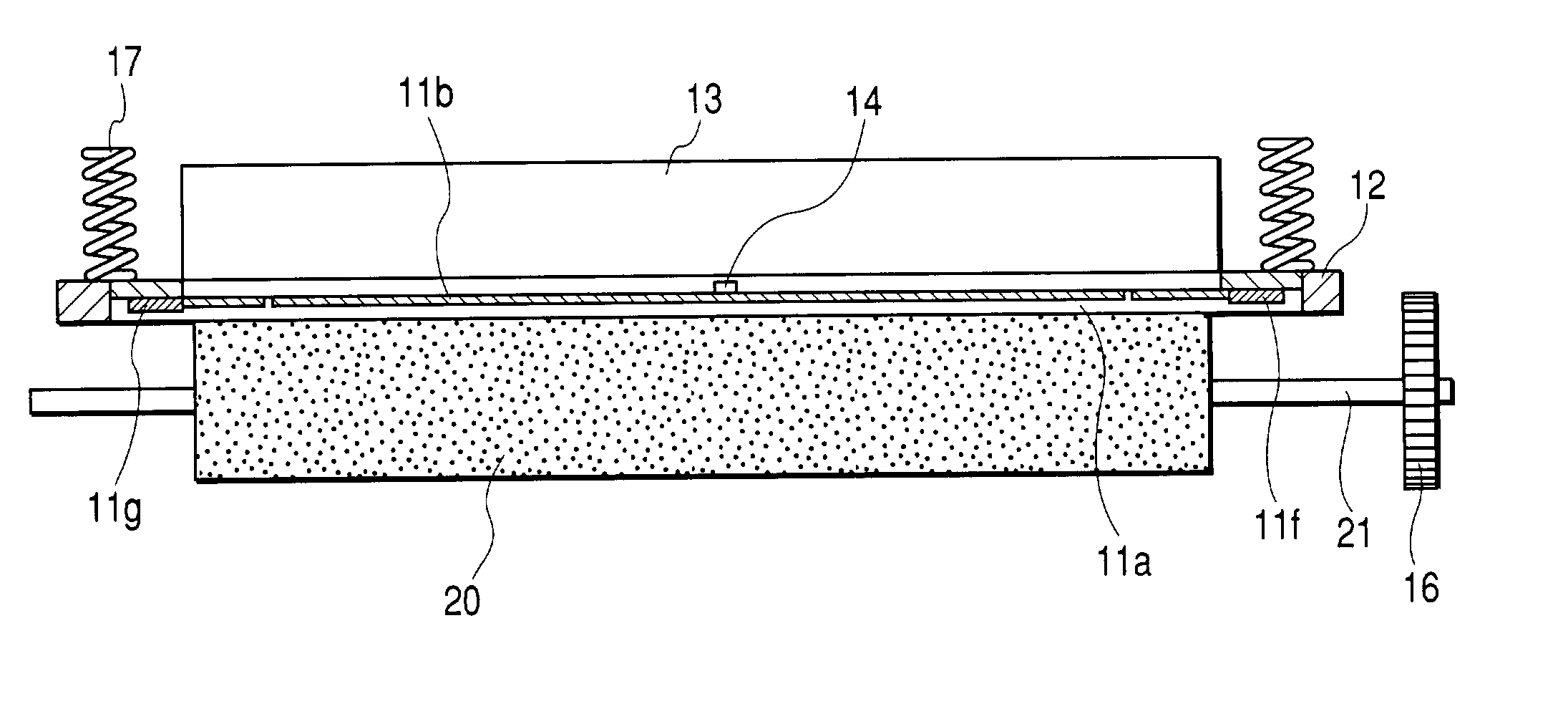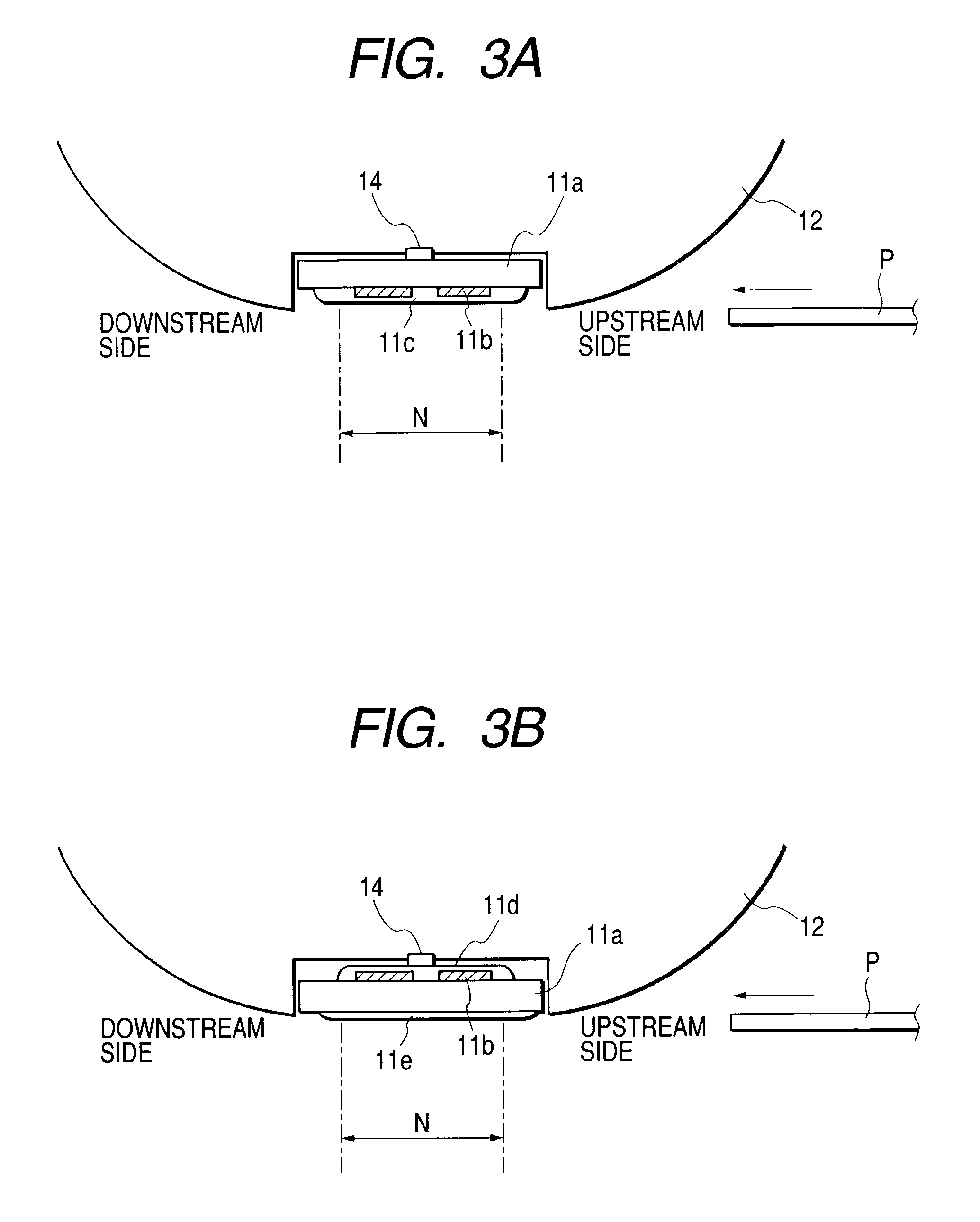Image heating apparatus having metallic rotary member contacting with heater
a heating apparatus and rotary member technology, applied in the direction of ohmic-resistance heating, shafts and bearings, instruments, etc., can solve the problems of above-described heat fixing apparatus, poor heat efficiency, waste of energy,
- Summary
- Abstract
- Description
- Claims
- Application Information
AI Technical Summary
Problems solved by technology
Method used
Image
Examples
third embodiment
[0145] (Third Embodiment)
[0146] Embodiment 3 will hereinafter be described. The general construction of the image forming apparatus is similar to that of FIG. 1 shown in Embodiment 1, and the construction of the interior of the heat fixing apparatus is also similar to that of FIG. 2 shown in Embodiment 1 and therefore need not be described.
[0147] In the present embodiment, a potential difference is formed between the metallic sleeve 13 and the pressure roller 20 which is a pressure member and the metallic sleeve 13 is brought into its grounded state or brought into its grounded state through a diode to thereby make it difficult for paper dust and the toner to adhere to the metallic sleeve 13, thus providing a heat fixing apparatus which maintains mold releasability through endurance.
[0148] FIGS. 8A and 8B show the more detailed construction of the heat fixing apparatus in the present embodiment. In FIGS. 8A and 8B, the elastic layer 22 of the pressure roller 20 which is a pressure m...
PUM
 Login to View More
Login to View More Abstract
Description
Claims
Application Information
 Login to View More
Login to View More - R&D
- Intellectual Property
- Life Sciences
- Materials
- Tech Scout
- Unparalleled Data Quality
- Higher Quality Content
- 60% Fewer Hallucinations
Browse by: Latest US Patents, China's latest patents, Technical Efficacy Thesaurus, Application Domain, Technology Topic, Popular Technical Reports.
© 2025 PatSnap. All rights reserved.Legal|Privacy policy|Modern Slavery Act Transparency Statement|Sitemap|About US| Contact US: help@patsnap.com



